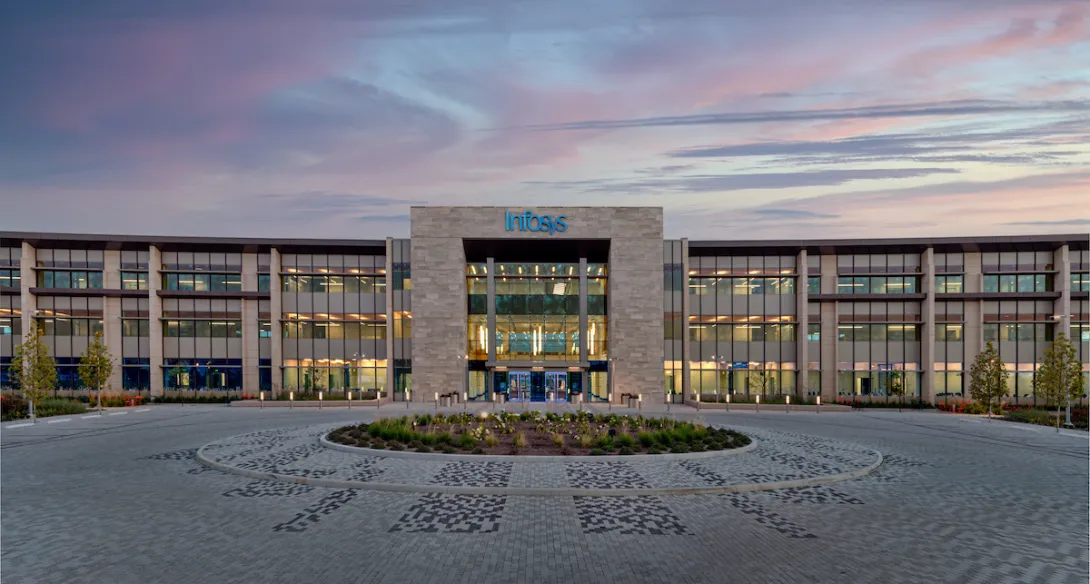The Proof Is in the IEQ Pudding

Project: Infosys Indianapolis Technology and Innovation Hub
Size: 160,585 ft2
Owner: Infosys
Owner’s Representative (Sustainability): Point Energy Innovations
Architect, LEED Manager (Design), and Landscape Architect: Browning Day
MEP Engineer: Ross & Baruzzini
Structural Engineer: Fink, Roberts & Petrie
Construction Manager: Browning Investments
LEED Manager (Construction): Bravo MCC
Civil Engineer: Cripe Architects & Engineers
Commissioning Authority: Heapy Engineering
Daylighting Designer: Lam Partners
Acoustics Designer: IMEG
“Air testing doesn’t care what the spreadsheet says.”
That’s Daniel Overbey, director of sustainability at Browning Day, expounding on the perils of relying on air-quality testing to hit LEED Platinum. A lot was riding on the two points that the Infosys Indianapolis Technology and Innovation Hub project team hoped to achieve through the air-testing option of the IAQ assessment credit.
But the team didn’t do anything extraordinary to hit the stringent targets. “We didn’t do anything unique and special outside of just what LEED calls for” throughout the Indoor Environmental Quality credit category, Overbey told LEEDuser. “Spreadsheets and cut sheets can be frustrating for team members, but it actually does matter. Best practices actually do work.”
The owner’s commitment to the indoor environment came about even before COVID and went beyond air quality. In fact, the project earned 14 of 16 possible points in the IEQ category. The daylight credit is notoriously difficult to achieve under v4, Overbey mentioned, and the project achieved full marks for low-emitting materials, thermal comfort, quality views, and acoustic performance.
The project also earned 32 of 33 possible Energy & Atmosphere points despite its difficult cold climate.
None of this would have been possible without a fully integrated team, Overbey notes. “It forces you to have a more integrative design process,” he said. “Just as a practical matter, if you’re being held accountable to achieving all these things, it naturally prompts more coordination and discussion. Things were harmonized. It was a whole other level of integrated disciplines.”
The project scorecard is available at USGBC.org.
